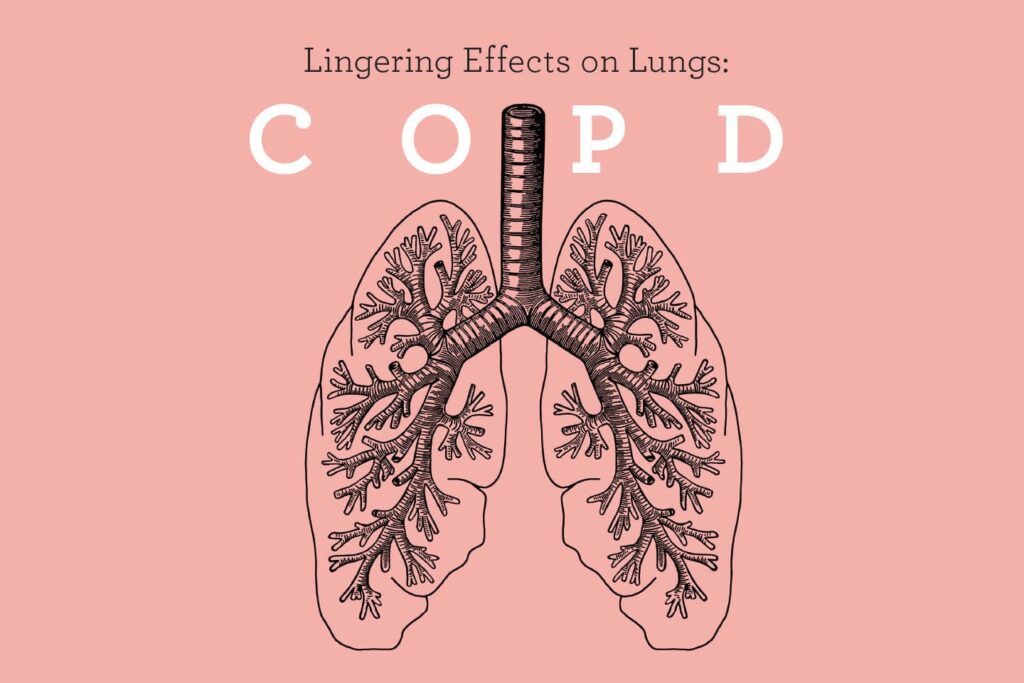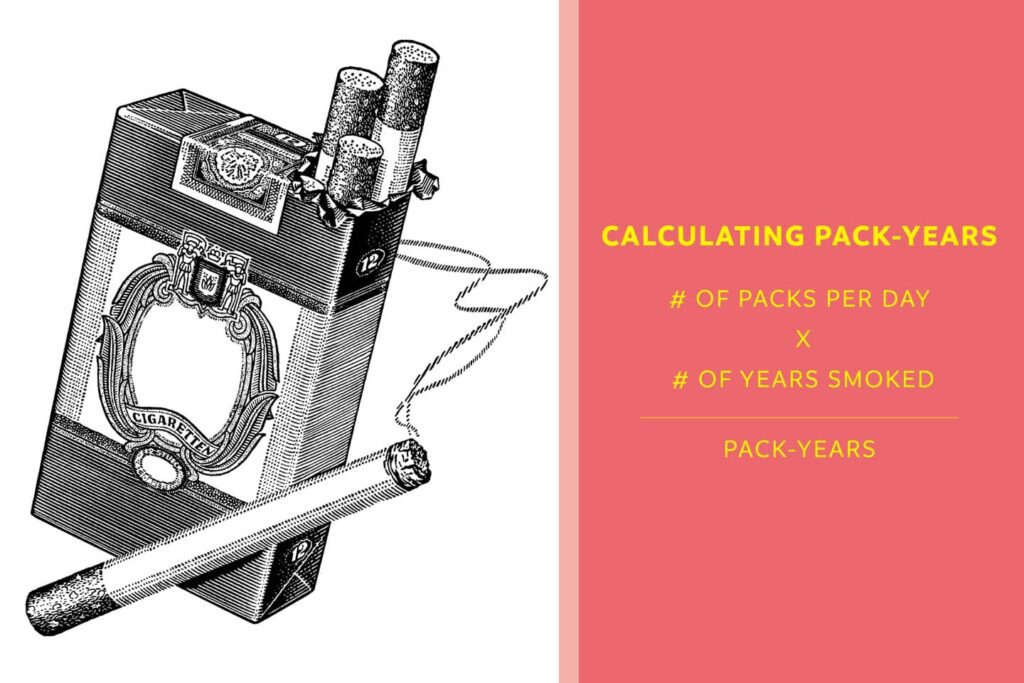Learn All About COPD
As the third leading cause of death in the United States, COPD is wreaking havoc on adults without their knowledge.

It’s a story many know well: you try to stay in shape, you’ve started watching what you eat, and you finally stopped smoking. You figure you should probably take the stairs at work, but when you do, you’re so out of breath that you enter the office looking like you’ve just finished running wind sprints. It won’t hurt to take the elevator, you think. Unfortunately, you may not notice that your breathing is becoming more labored every day. And not addressing what appears to be a small or irrelevant change in your health may cause a more severe, longer-term health problem down the road. COPD is an insidious disease that needs to be identified and treated early to slow its progression.
The Facts on COPD: Chronic Obstructive Pulmonary Disease
Chronic Obstructive Pulmonary Disease, or COPD, is a life-threatening, inflammatory lung disease that drastically interferes with airflow into and out of the lungs. The umbrella term encompasses several different lung issues, such as emphysema, chronic bronchitis, non-reversible asthma, and other diseases that cause progressive damage to the lungs.
The COPD Foundation reports that as many 30 million individuals in the U.S. have COPD, and recent data from the Centers for Disease Control and Prevention (CDC) shows that here in Tennessee, as much as 12.3% of the adult population suffers from COPD.
Once more prevalent in men, COPD has become more common in women over the last two decades. In fact, 56% of sufferers are women today, with common culprits considered biological makeup – women have smaller lungs – and the rise of tobacco usage in females. It’s also not uncommon for women to be misdiagnosed – often with asthma – since COPD has historically been deemed a “man’s disease.”
What’s most alarming though, is the fact that more than half of the individuals suffering from the deadly disease don’t even know they have it.
COPD attacks the structure and functionality of the lungs, increasing breathlessness over time. Most commonly, it’s a combination of chronic bronchitis and emphysema. Dr. Asad Javed, a pulmonologist with Buz Standefer Lung Center at CHI Memorial, explains, “COPD affects your lungs by two main pathways. Normal lung tissue is like a balloon – it can inflate and deflate. The airways are like tubes that allow air to flow through with ease. Smoking and other inhaled irritants cause these ‘balloons’ to lose the ability to deflate once they are inflated, causing air to become trapped. Additionally, the ‘tubes’ become inflamed and develop mucus, causing the flow of air to be obstructed. Together, these lead to shortness of breath, coughing, and fatigue, and increases risk of infections.”
Understanding Your Risk
Smoking cigarettes is the number one cause of COPD. While not everyone who smokes gets COPD – less than 50% do – over 90% of people facing the disease today are either current or former smokers. The number of packs a day someone smokes, in addition to the number of years they have smoked, can affect the severity.
Unfortunately, smoking isn’t the only risk factor associated with the disease. Environmental factors like the inhalation of chemicals, dust, fumes, and secondhand smoke can also lead to lung damage and increased risk of developing COPD. After all, the lungs have an intense immune response to inhaled foreign substances, which results in inflammation.


There are rare genetic diseases that can also cause COPD. According to Dr. Radhika Shah, a pulmonary specialist with Erlanger, “The most common genetic disease associated with COPD is Alpha 1 Antitrypsin deficiency. This is a rare disorder in which COPD can occur at an earlier age and even if the individual does not smoke.”
Catching It Early
Since COPD is a disease that slowly takes away a person’s ability to breathe, catching it early is important. Dr. Javed explains, “Symptoms are progressive and are not as obvious until the disease is advanced. Coughing and the feeling of breathlessness are often incorrectly attributed to either a normal age-related process or another medical problem. Because of this, patients begin limiting themselves and avoiding certain activities not realizing these are adaptive behaviors.” Other signs you should get checked for COPD include wheezing, tightness in the chest, frequent respiratory infections, lack of energy, swelling in the ankles, feet, or legs, and unintended weight loss.
If left untreated, COPD can lead to serious consequences like heart problems, lung cancer, and high blood pressure. It can even directly cause depression, as lowered oxygen levels and difficulty breathing can make you fatigued and unable to enjoy the things that you love.
Fortunately, testing for the disease is quick and simple. Your doctor will perform a spirometry test, also called a pulmonary function test, to identify asthma, restrictive lung disease, or other issues that might be affecting the lungs. The test measures how much air you can move in and out of your lungs, and it can detect COPD before symptoms have arisen. If your lung capacity is diminished, the physician will know immediately.
Dr. Shah shares, “The other important test to consider is a low dose CT scan of the chest to screen for lung cancer. The current recommendations are that individuals ages 55 to 80 who have smoked for 30 pack-years or have quit within the past 15 years should participate in annual lung cancer screenings. If you meet these criteria, this should be discussed with your health care provider regardless of whether or not you have COPD.”


Prevention and Treatment
There is no way to reverse the lung tissue damage caused by COPD, but there are treatments to slow the progression of the disease. Dr. Javed notes, “The goal of treatment is to minimize or eliminate symptoms like cough and shortness of breath, in addition to preventing flare-ups.”
Most people have mild forms of the disease, so smoking cessation might be the only therapy needed. Dr. Shah shares, “Smoking cessation is one of the only treatments for COPD that can help you live longer, slow down the loss of lung function, and reduce your risk of hospitalization. It also eventually decreases your risk of coronary artery disease, stroke, and lung cancer.”
At more advanced stages, medications may be required. These include inhalers with bronchodilators to relax the airway muscles, inhalers with corticosteroids to reduce inflammation, and oral steroids for those with moderate or severe exacerbation. For those who cannot be sufficiently treated with medication alone, surgery may be the best course of action.
In addition to quitting smoking and taking medications, it’s important to exercise, eat healthy foods, avoid air pollutants, visit your doctor regularly, and get your flu shot, since flu symptoms can exacerbate the symptoms of COPD. Each case is different, so talking to your doctor is the first step.
If you have COPD or fear you might, today’s the day to take control of your health. Whether you need to quit smoking, improve your diet, or up your exercise routine, the new year is a great time to promise yourself change and to achieve your goals.


Dr. Asad Javed
Pulmonologist, Buz Standefer Lung Center at CHI Memorial


Dr. Radhika Shah
Pulmonary Specialist, Erlanger

